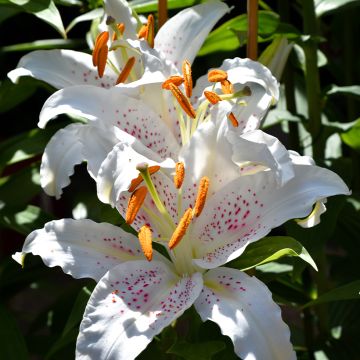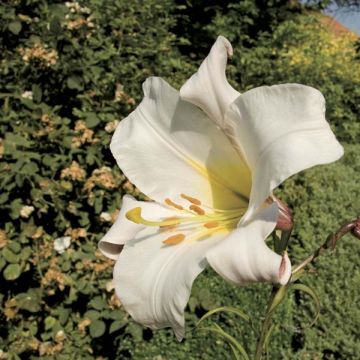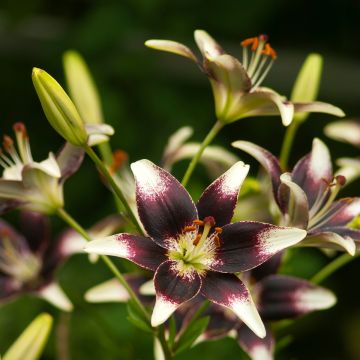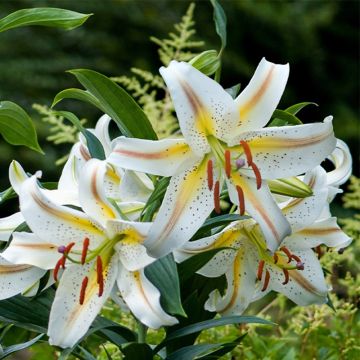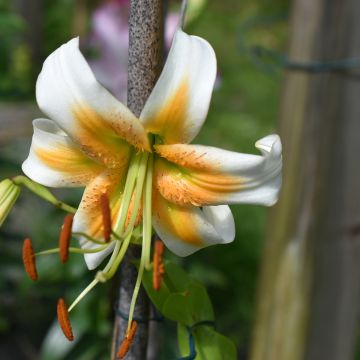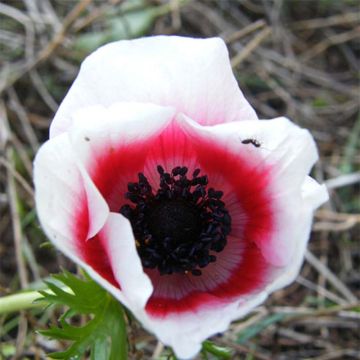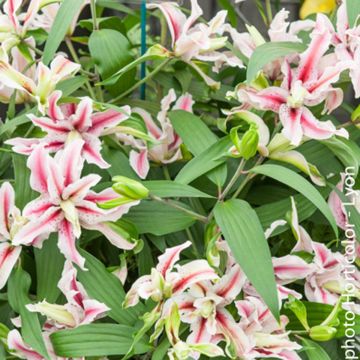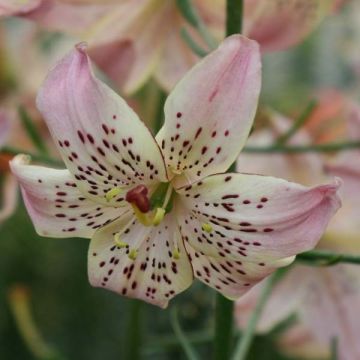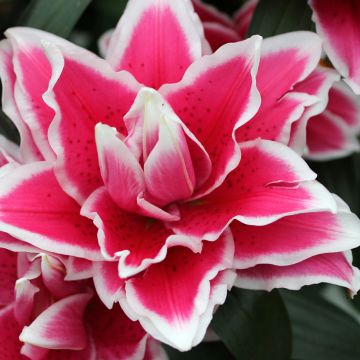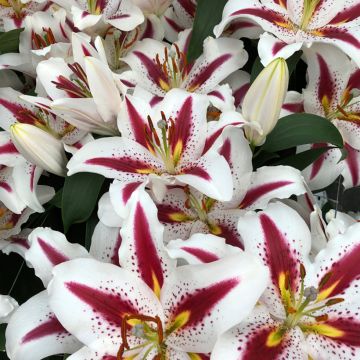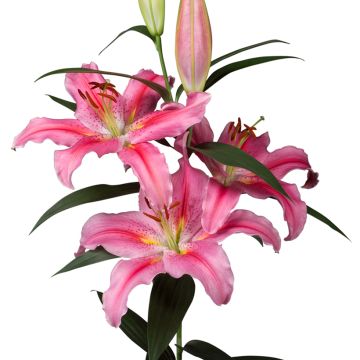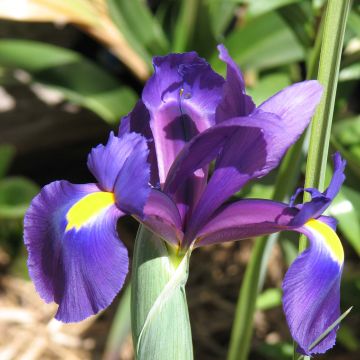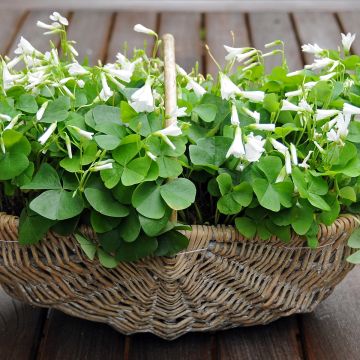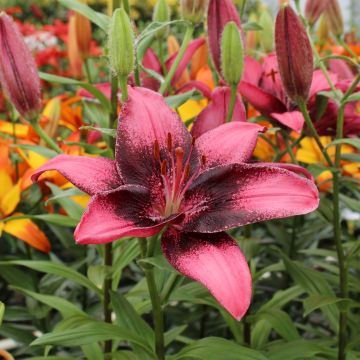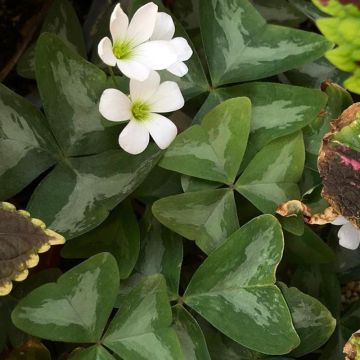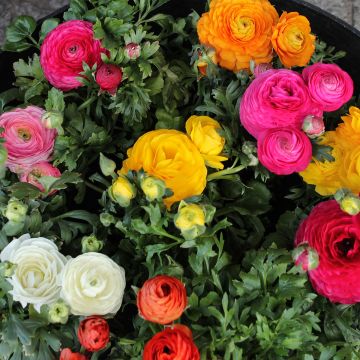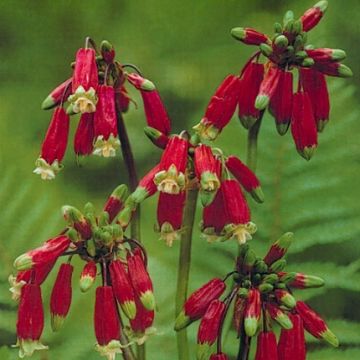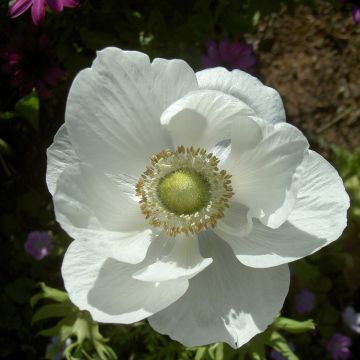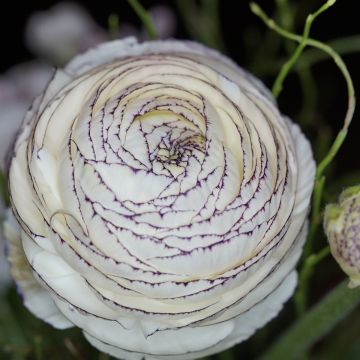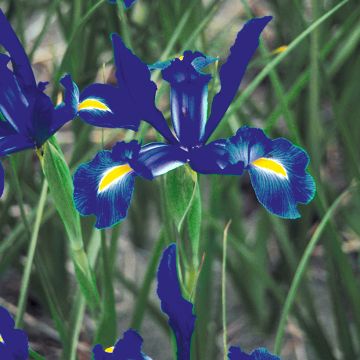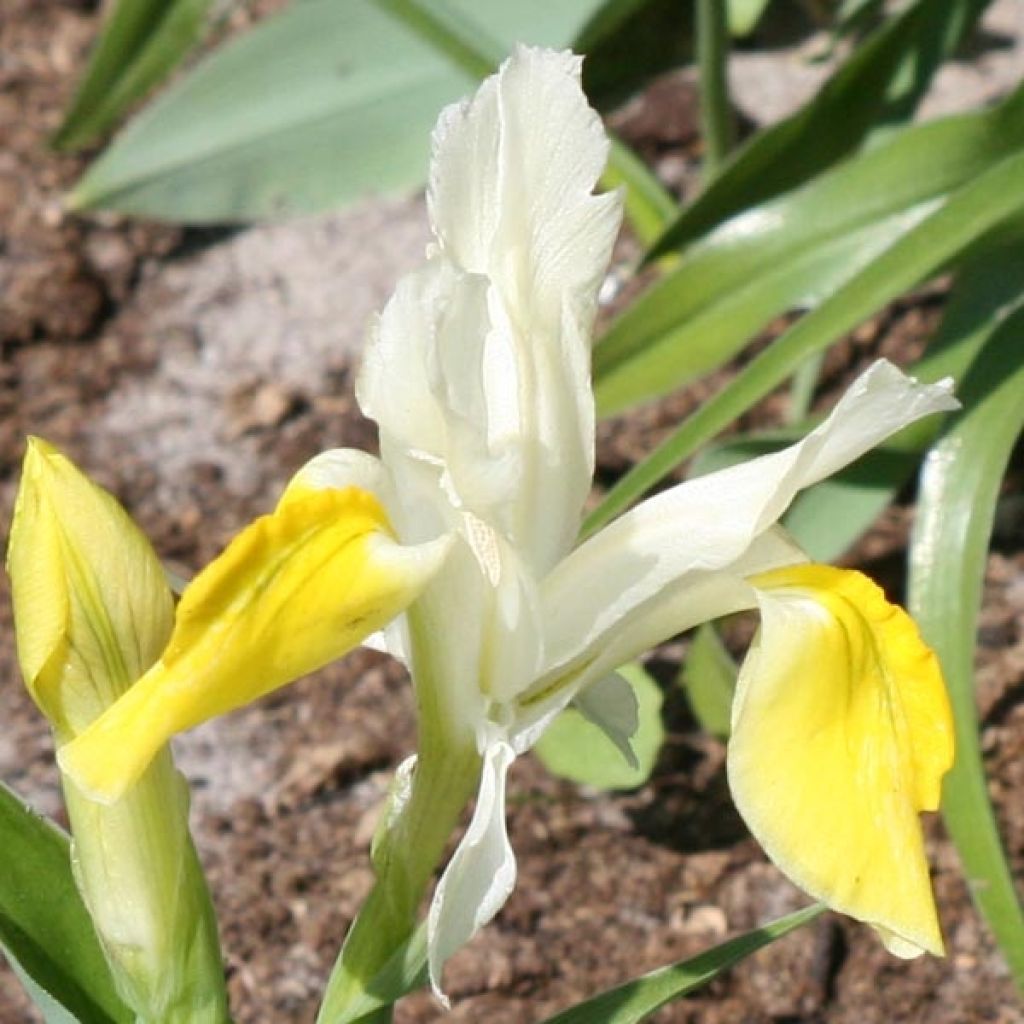

Iris bucharica
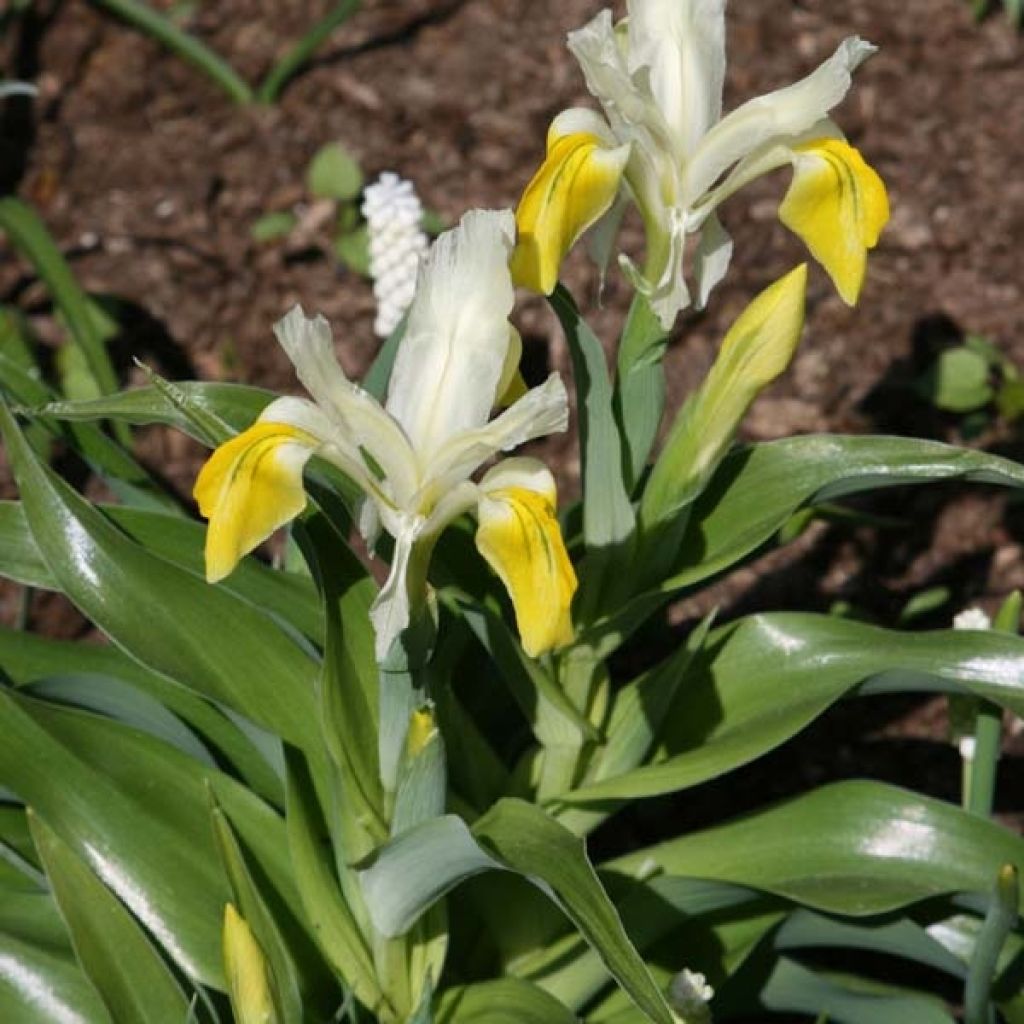

Iris bucharica
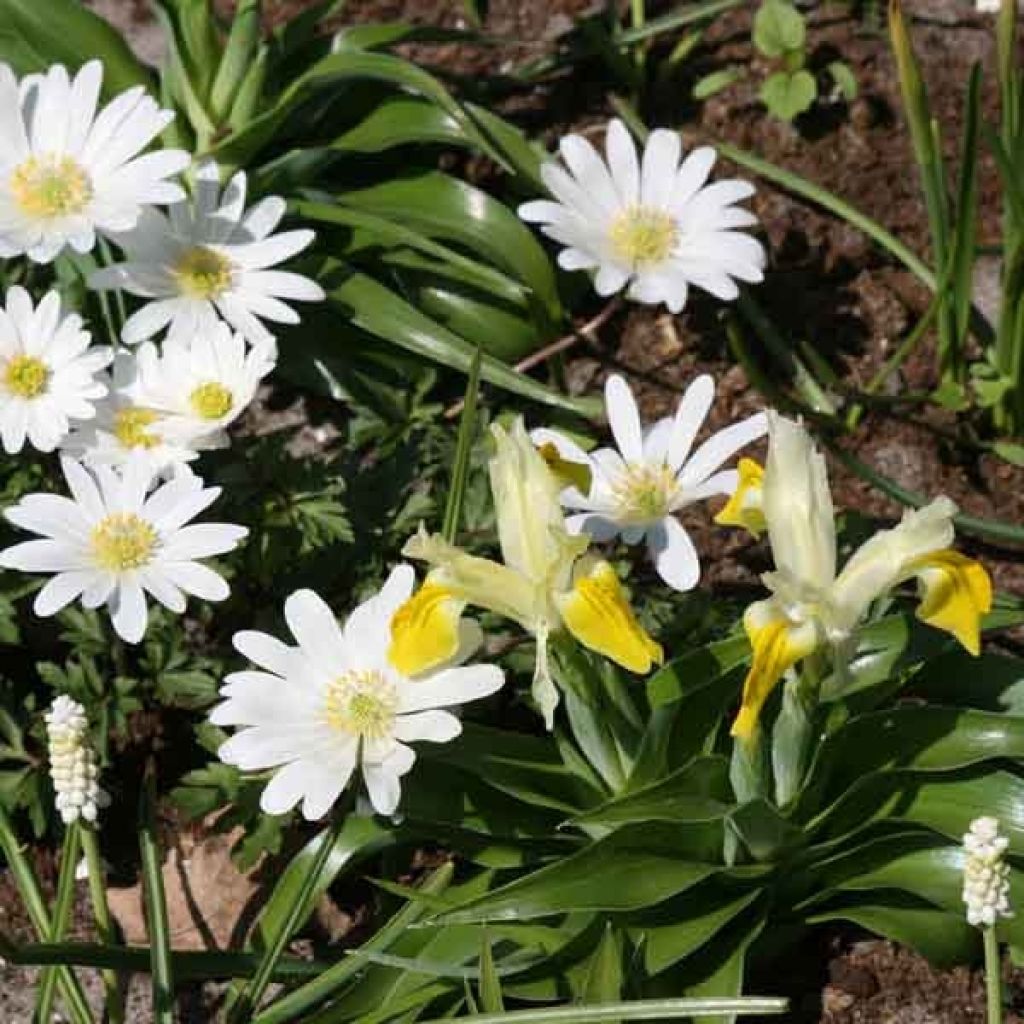

Iris bucharica
Iris bucharica
Iris bucharica
Bucharica Iris, Buchara Iris, Corn Leaf Iris
A bit tired, average condition, seem to be recovering.
Anna C., 16/07/2019
Why not try an alternative variety in stock?
View all →Order in the next for dispatch today!
Dispatch by letter from €3.90.
Delivery charge from €5.90 Oversize package delivery charge from €6.90.
Current delivery delay: 1 day.
More information
This item is not available in your country.
Schedule delivery date,
and select date in basket
This plant carries a 6 months recovery warranty
More information
We guarantee the quality of our plants for a full growing cycle, and will replace at our expense any plant that fails to recover under normal climatic and planting conditions.
From €5.90 for pickup delivery and €6.90 for home delivery
Express home delivery from €8.90.


Does this plant fit my garden?
Set up your Plantfit profile →
Description
The Iris bucharica, little known to French gardeners, grows in vigorous clumps on rocky slopes in the mountains of Central Asia and northeastern Afghanistan. Anchored on large fleshy roots, it develops somewhat like a dwarf corn, with stems adorned with long satin leaves. It is adorned in spring with very bright flowers, creamy white and vibrant lemon yellow, adorned with brown lines. This montane species is not afraid of cold or dryness in summer: it should be planted in full sun, in a rockery or raised bed, alongside shrubs or equally modest perennials that will hide the empty space it leaves in summer.
The Iris bucharica, sometimes called Iris Boukhara, belongs to the family of Iridaceae and to the group of Iris Juno Scorpiris, which includes species with smooth bulbs that can sometimes be delicate to grow. This one, very ornamental, is also the easiest to cultivate in the group, which earned it recognition from the Royal Horticultural Society. Its origins are found in Afghanistan, Tajikistan, and Uzbekistan (around Bukhara). It is found there in pebbles along the rivers and on gravelly slopes, at an altitude between 1500 and 1800 m (4921 and 5905ft).
This vigorous iris has a yellowish-white bulb, measuring about 2 cm (1in) in diameter, with fine fleshy roots. It forms clumps that reach an average height of 30 cm (12in) and spreads laterally quite rapidly, by producing new bulbs each year. From early April, the leafy stems elongate. Each stem will bear up to 7 solitary, non-fragrant flowers, which bloom from the top of the stem downwards. Each flower, 4 to 6 cm (2in) in diameter, is composed of 3 upright petals in white to cream-white colour, dominating 3 drooping sepals in vibrant yellow colour, adorned with fine brown veins.
This iris is also distinguished by the arrangement of its foliage along the stems. The flexible leaves, with entire ensate-shaped (sword-shaped) form, are imbricated at the base. They measure from 10 to 20 cm (4 to 8in) in length and are bright green on top and green-grey-blue on the underside. The foliage dries up in summer and then disappears. The plant goes into dormancy in summer to escape the dryness of summer.
The Iris bucharica can be planted in a sunny rockery, in pots, flower beds, and borders, as well as in bouquets. It pairs very well with muscari, as shown in the photo, as well as with crocus or botanical tulips, anemones blanda or coronaria. To hide the empty space it leaves in summer, it is interesting to plant small lavenders, thymes, helianthems, or santolinas near it, which also appreciate gravelly soils.
Report an error about the product description
Plant habit
Flowering
Foliage
Botanical data
Iris
bucharica
Iridaceae
Bucharica Iris, Buchara Iris, Corn Leaf Iris
Central Asia
Other Spring bulbs A to Z
Planting and care
The Bucharica Iris is planted in late summer, when it is dormant. It should be placed in full sun in a dry soil, rich in humus or organic matter (compost), well-drained. If necessary, add rocks, gravel or sand. This species is not at all afraid of summer drought or cold and tolerates limestone very well. Flowering will be more abundant if the summer is dry and hot, allowing for good ripening of the fleshy roots. In winter, protect the irises with crushed bark between the plants. Water once a week during the growth period if necessary, and keep dry during the dormant period. The fleshy roots rot in insufficiently drained soil, in both summer and winter.
Planting period
Intended location
Care
-
, onOrder confirmed
Reply from on Promesse de fleurs
Haven't found what you were looking for?
Hardiness is the lowest winter temperature a plant can endure without suffering serious damage or even dying. However, hardiness is affected by location (a sheltered area, such as a patio), protection (winter cover) and soil type (hardiness is improved by well-drained soil).

Photo Sharing Terms & Conditions
In order to encourage gardeners to interact and share their experiences, Promesse de fleurs offers various media enabling content to be uploaded onto its Site - in particular via the ‘Photo sharing’ module.
The User agrees to refrain from:
- Posting any content that is illegal, prejudicial, insulting, racist, inciteful to hatred, revisionist, contrary to public decency, that infringes on privacy or on the privacy rights of third parties, in particular the publicity rights of persons and goods, intellectual property rights, or the right to privacy.
- Submitting content on behalf of a third party;
- Impersonate the identity of a third party and/or publish any personal information about a third party;
In general, the User undertakes to refrain from any unethical behaviour.
All Content (in particular text, comments, files, images, photos, videos, creative works, etc.), which may be subject to property or intellectual property rights, image or other private rights, shall remain the property of the User, subject to the limited rights granted by the terms of the licence granted by Promesse de fleurs as stated below. Users are at liberty to publish or not to publish such Content on the Site, notably via the ‘Photo Sharing’ facility, and accept that this Content shall be made public and freely accessible, notably on the Internet.
Users further acknowledge, undertake to have ,and guarantee that they hold all necessary rights and permissions to publish such material on the Site, in particular with regard to the legislation in force pertaining to any privacy, property, intellectual property, image, or contractual rights, or rights of any other nature. By publishing such Content on the Site, Users acknowledge accepting full liability as publishers of the Content within the meaning of the law, and grant Promesse de fleurs, free of charge, an inclusive, worldwide licence for the said Content for the entire duration of its publication, including all reproduction, representation, up/downloading, displaying, performing, transmission, and storage rights.
Users also grant permission for their name to be linked to the Content and accept that this link may not always be made available.
By engaging in posting material, Users consent to their Content becoming automatically accessible on the Internet, in particular on other sites and/or blogs and/or web pages of the Promesse de fleurs site, including in particular social pages and the Promesse de fleurs catalogue.
Users may secure the removal of entrusted content free of charge by issuing a simple request via our contact form.
The flowering period indicated on our website applies to countries and regions located in USDA zone 8 (France, the United Kingdom, Ireland, the Netherlands, etc.)
It will vary according to where you live:
- In zones 9 to 10 (Italy, Spain, Greece, etc.), flowering will occur about 2 to 4 weeks earlier.
- In zones 6 to 7 (Germany, Poland, Slovenia, and lower mountainous regions), flowering will be delayed by 2 to 3 weeks.
- In zone 5 (Central Europe, Scandinavia), blooming will be delayed by 3 to 5 weeks.
In temperate climates, pruning of spring-flowering shrubs (forsythia, spireas, etc.) should be done just after flowering.
Pruning of summer-flowering shrubs (Indian Lilac, Perovskia, etc.) can be done in winter or spring.
In cold regions as well as with frost-sensitive plants, avoid pruning too early when severe frosts may still occur.
The planting period indicated on our website applies to countries and regions located in USDA zone 8 (France, United Kingdom, Ireland, Netherlands).
It will vary according to where you live:
- In Mediterranean zones (Marseille, Madrid, Milan, etc.), autumn and winter are the best planting periods.
- In continental zones (Strasbourg, Munich, Vienna, etc.), delay planting by 2 to 3 weeks in spring and bring it forward by 2 to 4 weeks in autumn.
- In mountainous regions (the Alps, Pyrenees, Carpathians, etc.), it is best to plant in late spring (May-June) or late summer (August-September).
The harvesting period indicated on our website applies to countries and regions in USDA zone 8 (France, England, Ireland, the Netherlands).
In colder areas (Scandinavia, Poland, Austria...) fruit and vegetable harvests are likely to be delayed by 3-4 weeks.
In warmer areas (Italy, Spain, Greece, etc.), harvesting will probably take place earlier, depending on weather conditions.
The sowing periods indicated on our website apply to countries and regions within USDA Zone 8 (France, UK, Ireland, Netherlands).
In colder areas (Scandinavia, Poland, Austria...), delay any outdoor sowing by 3-4 weeks, or sow under glass.
In warmer climes (Italy, Spain, Greece, etc.), bring outdoor sowing forward by a few weeks.


































